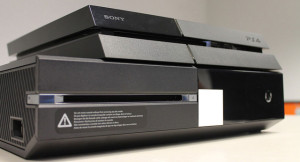Nintendo To Unify Hardware Development At the Cost of Diversity
It has long been rumored that Nintendo’s next piece of hardware is set to combine both portable and home console form factors – the mythical Nintendo Fusion. Many have interpreted this to mean that Nintendo would create a single piece of hardware which would feature the capacity to be used for both mobile and home gaming in an interchangeable fashion, but this is not necessarily the case. Digital Foundry have unearthed some revealing quotes made by Satoru Iwata to investors, which appears to indicate that the primary aim of Nintendo Fusion is to create a unified development environment where code and assets from a mobile game can be directly carried over to console games, and vice versa.
“Previously, our handheld video game devices and home video game consoles had to be developed separately as the technological requirements of each system, whether it was battery-powered or connected to a power supply, differed greatly, leading to completely different architectures and, hence, divergent methods of software development.
However, because of vast technological advances, it became possible to achieve a fair degree of architectural integration. We discussed this point, and we ultimately concluded that it was the right time to integrate the two teams. For example, currently it requires a huge amount of effort to port Wii software to Nintendo 3DS because not only their resolutions but also the methods of software development are entirely different. The same thing happens when we try to port Nintendo 3DS software to Wii U.
If the transition of software from platform to platform can be made simpler, this will help solve the problem of game shortages in the launch periods of new platforms.”
Given that Japan loves portable gaming to the exclusion of console gaming, while the West prefers console gaming and tends to focus less on portable gaming, it makes sense that Nintendo are looking to unify the process of software development so that they can release their big games across all of their platforms in a similar way to their recent Smash Bros. strategy. To this end Nintendo’s home console and portable console development teams have now been merged, to facilitate the creation of future hardware which adheres to a broadly compatible ecosystem along the lines of iOS and Android development. While it makes a certain kind of sense for Nintendo to pursue this course of action, the flipside is that the game libraries of Nintendo consoles and handhelds will lose much of their traditional uniqueness – as when big Nintendo games can be played on either system, then there is no longer the incentive to purchase both of them. This kind of strategy can be observed in relation to Super Mario 3D Land and Super Mario 3D World; the latter title seems to be positively regarded by the vast majority of gamers, yet one cannot help but be of the view that the Wii U has not [and likely never will] receive its own 3D Mario title, since the game’s concepts have merely been reheated from the portable iteration.
Why We Keep Seeing Disasters Like Assassin’s Creed Unity Being Released
This year more than perhaps any other has been the year of shipping half finished games – even occasioning high level apologies from key people behind Driveclub, The Master Chief Collection, and of course Assassin’s Creed Unity. Have these high profile blunders been significant enough to prevent similar cock-ups going forward? The answer to that is a resounding ‘no’ if Keith Fuller and Clinton Keith, two former Activision men, are to be believed. According to the Keiths the cost of producing modern games has led to the development of annual franchises who’s release dates are determined by the marketing department, as the only means of raking in predictable profits. In such circumstances development time is extremely tight, and the team is put under increasing pressure to make each franchise installment bigger and more complex than the last. And then the inevitable happens – the team is forced to ship a title that has not been properly polished, which hurts the franchise along with the company’s ability to rake in profits. This then leads to the company’s investors placing increased pressure on the development team in terms of ever more aggressive scheduling and scope to get the company’s profitability back on track – creating something of a vicious cycle.
Keith Fuller:
“Developers get the short end of both sticks: death marches and the blame for low quality.
Developers rarely get to tell Marketing ‘We can ship it now, we fixed all the bugs, rather, the marketing department will tell you when you’re launching regardless of fixing bugs. If you want that arrangement to change, figure out how to sell millions of units without telling anyone your game exists.
The last game I worked on as a studio dev was Call of Duty: Black Ops, and Activision’s legal team would go into cardiac arrest if I shared with you how few months before launch that game was almost entirely unplayable, that’s due to the pressure of annual franchise installments and the competitive landscape.”
Clinton Keith:
“Teams are pressured to hit scope, schedule and cost goals up front that are unreasonable, beyond a point, not even crunching helps.
As a result of all this, the team releases an inferior game, which doesn’t sell well and damages the brand. The stakeholders/shareholders respond by applying more pressure to management, who then apply more pressure to development.”
According to Clinton Keith the extremely tight development deadlines lead the team to accruing an ever greater debt in terms of unoptimised code, bugs, and other minor deficiencies which are put off until the end of development, yet cannot always be adequately polished away before the game goes on sale. This situation highlights the insanity of the AAA armsrace that the major studios have voluntarily entered into, where they each produce games that are mostly beyond their means, and any misfires will result in calamity.
Xbone News
After an entire year of losing monthly sales in North America to Sony’s PS4, the Xbox One managed to finish the year on a high by taking top honours during November and December thanks to an aggressive fifty dollar price cut. Many onlookers thought that this price cut was here to stay – nope. In an act of abject insanity Microsoft have opted to push the Xbone’s pricing back up this week to a nominal $399, all but ensuring that the PS4 will go back to eclipsing the Xbox One in its home market. This comes at a time when Sony has announced that the PS4 has sold 18.5 million units to the Xbone’s 10 million units. This sales disparity is beginning to become more and more relevant as we see an increasing number of developers passing over the Xbone for the release of their games.
In other news, Far Cry 4 was temporarily pulled from Microsoft’s store this week for whatever reason. There is nothing too noteworthy about this in itself as it happens from time to time, yet interestingly when the game was pulled Xboners who had bought the title digitally became unable to play their game, leading to some hasty Microsoft damage control:
“If customers own the rights to a game, they can visit their download history and initiate a re-download whenever they please – even if the game has been delisted from Xbox Store and is no longer available for purchase.”
Obviously when something like this happens the mind’s first inclination is to wonder whether this could have been some latent vestige of Microsoft’s proposed Xbone DRM scheme – if so, then it paints a pretty bleak image of the landscape that the world of gaming may have found itself in.


